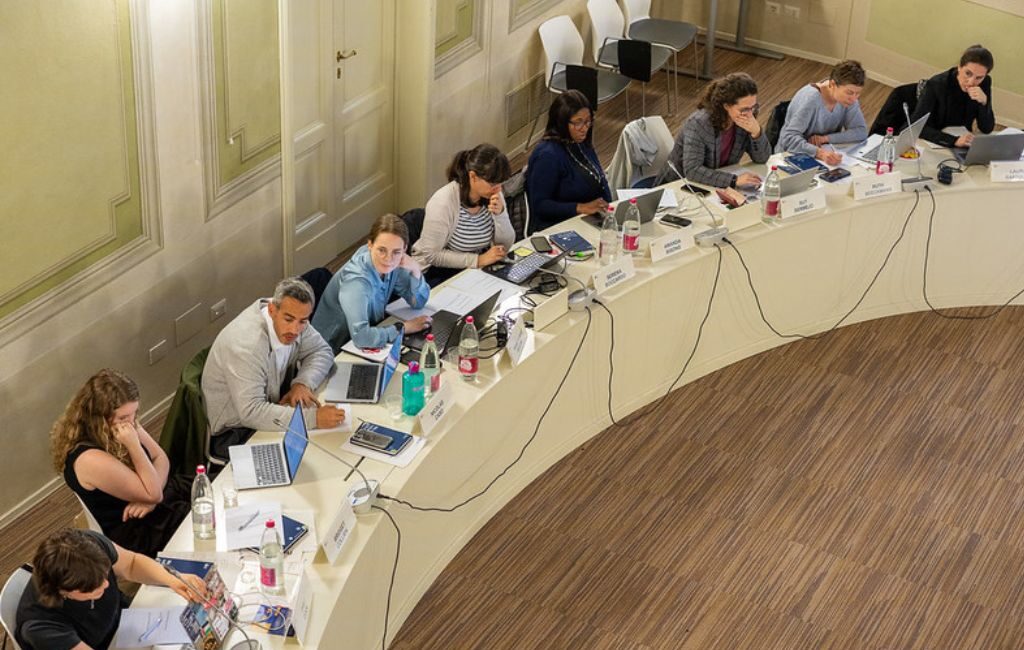
Engagement hub
Are you going to develop policy recommendations? Tips for Researchers
Author
About
Veronika Bilger
engagement approaches
In a time when policy increasingly asks for evidence, the ability to translate academic findings into actionable policy options isn’t just a nice-to-have skill; it often is a necessity. But, writing policy recommendations based on research is no easy feat. Even the most compelling findings can fail to gain traction if they aren’t aligned with policymakers’ priorities, constraints, and realities. Policy development is shaped by competing interests, complex socio-political contexts, and tight decision-making timelines—making it difficult for research to cut through the noise. For researchers, this presents a challenge: how do you craft recommendations that reflect your findings and are also practical, targeted, and persuasive?
In this short, we draw on the International Centre for Migration Policy Development’s (ICMPD) years of firsthand experience in navigating these challenges to provide researchers with strategies to turn complex findings into actionable policy recommendations.
How do you develop meaningful policy recommendations?
Here are some practical strategies to get started:
Understand the socio-political context
Start by getting a clear picture of the socio-political environment in which your recommendations will be applied. Identify the relevant factors, structural elements, and prevailing conditions. By grounding your recommendations in this context, you ensure they are pertinent and aligned with the observed realities. For example, in researching conditions for labour market participation of refugee women, we familiarised ourselves with the respective social fields and guiding frameworks by in-depth background talks with experts active in this field.
Consider stakeholders’ realities
Identify who the key stakeholders are, including policymakers, target groups, and influential actors. You should be able to name actual organisations or individuals. Familiarise yourself with their policy paradigms, positioning, priorities, values, and non-negotiables. Identify those who are amenable to your suggestions. Formulate your recommendations, but be mindful of the leeway and constraints of the actors involved in the policy processes to ensure recommendations are both practical and relevant to their realities. We typically begin this process early in the research. One way we did that was by engaging in early conversations with the identified stakeholder groups. This was helpful because it meant that we were able to translate our research findings in a way that was targeted to them. We could understand their ways of framing the problem and ensure our recommendations targeted their pain points.
Foster dialogue and understanding
When presenting findings and soliciting input, use communication formats such as workshops, discussion sessions, or feedback meetings that allow for a back-and-forth exchange. Encourage open dialogue while maintaining clear boundaries to avoid bias and ensure objective interactions. This could include regular exchange formats whereby both parties acknowledge their respective roles and foster mutual understanding.
Develop clear and concise recommendations
Provide specific recommendations that directly address identified issues. Avoid broad, vague or exaggerated suggestions that may not meet the specific needs in a policy context. Instead, offer clear, concise recommendations that directly tackle the issues identified in your research. Demonstrate how these will address the identified problems and lead to tangible improvements. This helps policymakers see the necessity of your suggestions. Offering solutions that are feasible increases the likelihood of successful take-up. A way to check if your recommendation is tailored is to ensure it includes the following elements: contextualisation, defined actors, an action and outcome focus, and a constructive approach.
Here is an example from one of our research projects on unaccompanied young refugees:
Offer proactive support for housing (constructive approach). Many young people encounter considerable difficulties securing suitable and affordable housing, particularly when they turn 18 and age out of youth support services. These challenges are often exacerbated by discriminatory practices in the housing market linked to their refugee background (contextualisation). Existing general advisory services [defined actors] could consider expanding their services within the current system, by including support from trained counsellors or mentors who can tailor their guidance to help navigate the housing market more effectively (action and outcome focus).
Make the case for change
Formulate your recommendations showing how your recommendations may lead to positive changes. This helps decision-makers understand why policy adjustments are needed and what long-term impacts they might have. Provide evidence to support your claims and why the proposed changes are beneficial. By demonstrating the potential benefits and providing a clear rationale for your recommendations, you help policymakers see the value in your proposals.
Communicate opportunities, not criticisms
Use clear, accessible language to ensure that your recommendations are easily understood. Avoid technical jargon and complex terminology. Instead, focus on straightforward explanations to make your recommendations easily accessible.
Draw your red lines wisely. Understand your recommendations as opportunities for improvement rather than criticisms of existing policies. A constructive tone helps foster a more receptive environment for your suggestions.
Ready to get started?
Turning research into actionable policy requires a strategic and nuanced approach.
Next time you are working to develop policy recommendations based on your research, check to see if you’ve done each of these things:
- Assess the problem within its socio-political context.
- Factor in the relevant conditions and influences.
- Identify and define your audience(s).
- Be mindful of their perspectives and constraints.
- Be clear and concise.
- Link recommendations to specific problems.
- Demonstrate (long-term) benefits.
- Evidence potential impact.
- Use clear, accessible and balanced language.
- Adopt a constructive tone.
By following these steps, you will increase the chances that your research not only contributes to academic knowledge but also leads to meaningful policy changes that address real-world challenges. This approach enhances the relevance of your work and contributes to positive societal outcomes.
Veronika Bilger is Head of Research at the ICMPD in Vienna and a member of the INNOVATE consortium.
Submit your idea for a 750-word post to be featured on our Engagement Hub.












